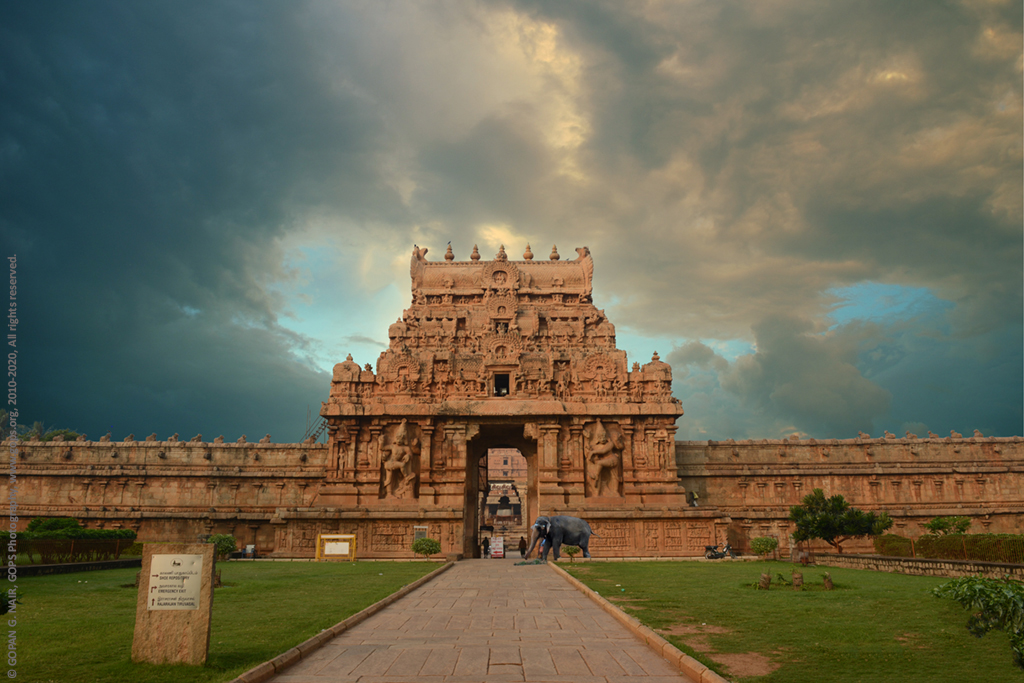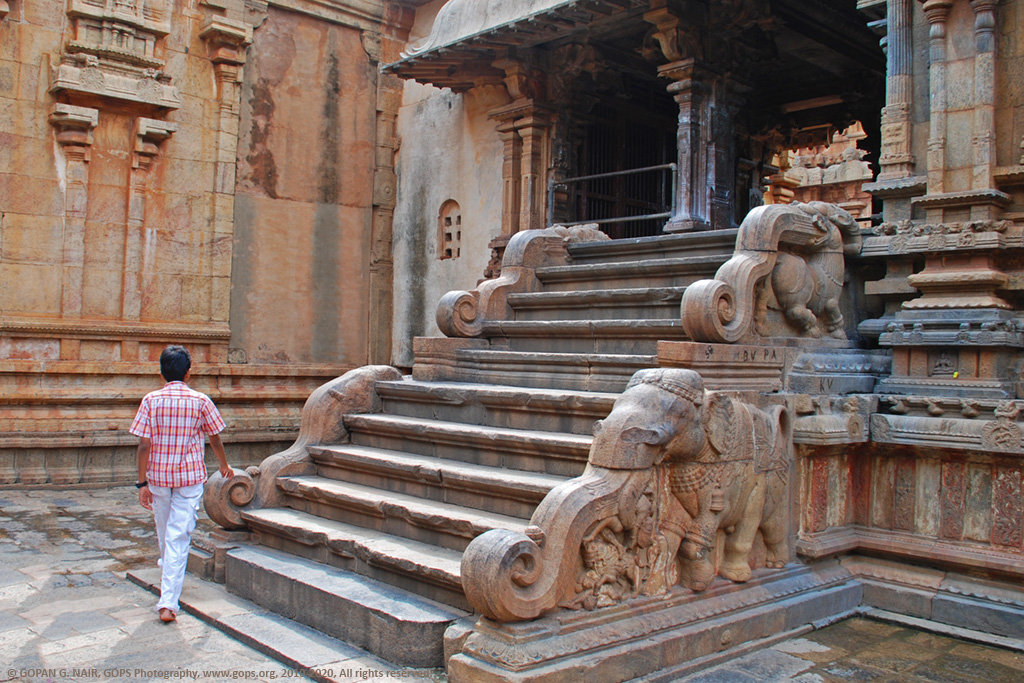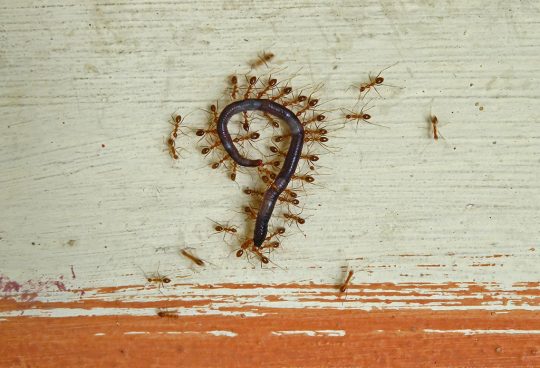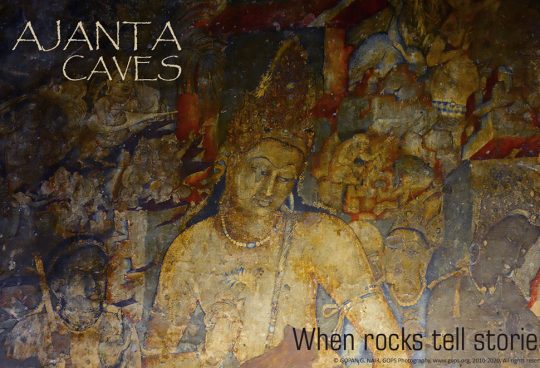‘The Great Living Chola Temples’, a group of three magnificent architectural marvels, were constructed during the Medieval Chola period and continue to stand proudly in Thanjavur, Tamil Nadu. These extraordinary temples – Brihadiswara, Gangaikondacholapuram (<click) and Darasuram (<click) – are renowned for their Dravidian architecture, advanced scientific knowledge, and exceptional artistic craftsmanship.
During my explorations of the history of the Chola empire, I had the opportunity to witness the entire life cycle of a dynasty that governed nearly all of Southern India for an extensive period. While the precise origins of the Chola dynasty remain ambiguous, it is thought that they coexisted with Ashoka around 300BC and maintained their dominance until 1279AD. Similar to many influential civilizations situated near rivers, the Chola territory was also established around the Kaveri river basin, and their remarkable legacy endures through the grand temples they constructed in the area. Among the prominent Chola rulers, Raja Raja Cholan and his son Rajendra Cholan stand out as leaders who oversaw the prosperous era during the 460-year Chola reign. The Cholas boasted one of the most formidable naval forces of their time, enabling them to capture the northern half of Sri Lanka in 996AD. Towards the conclusion of his rule, Raja Raja expanded his influence to the neighboring islands such as Andaman & Nikobar, Lakshadweep, and the Maldives. Raja Raja Chola engaged in persistent warfare with neighboring kingdoms such as Chera, Pandya, and Pallava on the west coast (current Kerala region), as well as with the Hoysalas, Gangas, and Chalukyas in present-day Karnataka and Andhra regions, ultimately conquering the majority of them.
The majestic Brihadiswara temple at Thanjavur, (also known as The Big Temple, Brihadiswara , Peruvudaiyar Kovil தஞ்சைப் பெருவுடையார் கோயில்) was built by Emperor Raja Raja Chola-I in 1010 AD (இராஜராஜ சோழன் : 985–1014 AD). This incredible temple, which celebrated its 1000th anniversary in 2010, stands as one of the largest temples in India and is recognized as a UNESCO World Heritage Monument. Its awe-inspiring and enigmatic architecture, dating back much earlier than the Taj Mahal, surely merits its place among the wonders of the world.
To honor his triumphs, Raja Raja Cholan laid the foundation stone of Brihadeeshwara Temple in 1002 AD. The construction commenced in 1004 and was successfully completed within 5 years in 1009. As per the scriptures, the chief architect of this remarkable structure was ‘Kunjara Mallan Raja Raja Perumthachan’, believed to be the legendary Perunthachan from Kerala ( പെരുന്തച്ചന് or Master Carpenter) . In Tamil and Malayalam languages, ‘Perum’ means Big and ‘Thachan’ means Craftsman, as mentioned in Malayalam folklore, who constructed numerous temples in the region. While several families lay claim to being descendants of Raja Raja Chola and Perunthachan, the authenticity of these claims cannot be confirmed without DNA fingerprints or proper documentary evidence. My intention is certainly not to initiate another controversy on this subject.
The splendid temple complex was once surrounded by a trench, which has since been filled in. It is enclosed by imposing boundary walls on all sides and boasts a magnificent entrance known as Maratha Gate, crowned by a gopuram that was constructed during the Maratha era. Upon passing through this main gate, one encounters another striking granite entrance adorned with a gopuram, known as Keralantakan Tiruvasal, which was built following a victorious war against the ruling Cheras of Kerala. As we entered, the elephant at the gate bestowed its blessing upon us for a small tip. Further along, we reached another intricately carved gate and gopuram called Rajarajan Tiruvasal. Footwear is not allowed beyond this point, leading to the Nandi Mandap which houses a colossal monolithic bull statue.
The construction of this 1000-year-old temple continues to baffle experts to this day. The main structure, known as the Gopuram, reaches a towering height of 216 feet (66 meters) and is assembled using interlocking granite blocks shaped like a pyramid, without the use of any mortar or sealing agents. Remarkably, the structure remains perfectly vertical despite enduring earthquakes and other natural forces. Adding to the intrigue, the gopuram casts no shadow on the ground at noon due to its unique architecture.
Even more astonishing is the colossal cap-stone, or dome (kumbham), perched atop the structure, weighing a staggering 81.28 tons. The method used to raise such an immense weight without modern machinery remains a mystery. While there are several theories attempting to explain this superhuman feat, the most compelling one suggests the construction of a 6.44 kilometer-long ramp alongside the gopuram, with the massive stone being pulled along by a combination of elephants and human strength. It’s possible that they utilized rolling tree trunks to transport the weight, resembling the techniques employed in the construction of the Egyptian pyramids. Remarkably, the spherical dome is composed of four pieces intricately joined together.
In total, 130000 tons of granite were used in the construction of this sprawling temple complex. An additional intriguing detail about the construction is that the stones were not locally sourced, but instead came from various quarries situated 20-30 kilometers away from the temple site.
The primary temple is situated on a large rectangular platform measuring 270 meters by X140 meters, with the Nandi mandap positioned at the front, around 100 meters away from the main shrine. An impressive monolithic Nandi statue, standing at 16 feet in length, 13 feet tall, and weighing 20 tons, is among the largest in India. Inside the GarbhaGriha, the innermost chamber, rests a towering 3.7-meter-tall Shiva Linga. The pyramid-shaped hollow gopuram is specifically designed to focus energy onto the linga. The temple walls are adorned with murals portraying Raja Raja and epic tales. Regrettably, photography has been prohibited inside the temples of TamilNadu, preventing me from capturing the magnificent paintings.
The temple complex boasts adjoining smaller shrines dedicated to the Goddess (Parvati), Ganesha, Subramanya, and other deities, each exuding the intricate craftsmanship of the Chola era. Intricate sculptures, murals, and inscriptions adorn the outer walls, showcasing the impeccable artistry of the period. Moreover, subsequent rulers such as the Marathas, Vijayanagara, Pandyas, and Nayaks added numerous smaller structures to the complex.
Beneath the temple complex lies a network of approximately a hundred secret tunnels, which were historically utilized by royalty, saints, and priests for swift access and emergency evacuation. However, these tunnels have been sealed off by the government and are inaccessible to the public at present.
The death of Raja Raja continues to be an unsolved mystery, even to this day. It is said that he met an unnatural death, possibly the reason for it being left undocumented, as it was considered inauspicious. Legend has it that Raja Raja fell from the 8th floor of Brihadiswara temple tower while supervising the construction and died on the spot. According to a more detailed story, between 991 and 993 AD, Raja Raja conquered the Northern half of Sri Lanka and forced King Mahinda-V of Sri Lanka to flee to the south. The defeated King Mahinda, seeking revenge, reportedly sent a Buddhist woman to India, who pushed and murdered Raja Raja from behind. Recent findings suggest that the burial place of Raja Raja has been discovered at Udayalur in Tamil Nadu. There is a temple with a half-submerged Shiva Linga and an inscription that indicates it is Raja Raja Chola’s tomb. Apart from the locals who conduct worship here, little is known to the external world. Soon after Raja Raja’s death, the construction of Brihadiswara temple was halted, remaining incomplete at 87% to this day.
Let’s honor the legacy of Raja Raja Chola by leaving the mystery of his passing to rest in the annals of history. Raja Raja Chola was an exceptional ruler of India, known for his generosity, bravery on the battlefield, territorial conquests, passion for the arts, and so much more. The enduring record of a king’s triumphs etched in solid rock will stand the test of time.
Join me as we embark on a journey to explore other magnificent achievements of the Chola dynasty here >> Gangaikondacholapuram (<click) and Darasuram (<click) .

























Naren Sharma
January 20, 2018
What a fantastic story, retold in simple language. Stunning pictures to support that too. Really interesting series. Loved it. Keep up the good work.
GOPAN NAIR
January 21, 2018
Thank you for your comments. Please keep following. We’ll travel together.
Nikonian
January 24, 2018
A temple inside a squirrel’s eye !!! What an idea !! What kind of equipment do you use ? Anyhow, that made me go through your entire web page, and it is world class !!!
GOPAN NAIR
January 24, 2018
I don’t have any special equipment. Pictures just happen and I was the chosen one to freeze it at the right moment. Thank you very much.
NATARAJAN
March 31, 2019
Excellent story-telling with brilliant photography ! Btb, have you been to the so-called resting place of Raja Raja Chola mentioned here ? Please provide more information.
GOPAN NAIR
April 02, 2019
Good to know that you liked it. Thanks a lot for your comments.No., I haven’t been to that place so far, but I intend to go there and document it.
SANTOSH KUMAR
September 18, 2024
Sir, I am in need of 2 or 3 pictures in high resolution format for a publishing project. Could you please let me know about the terms & conditions ?
GOPAN NAIR
September 20, 2024
Thanks for your concerns. Will PM you.